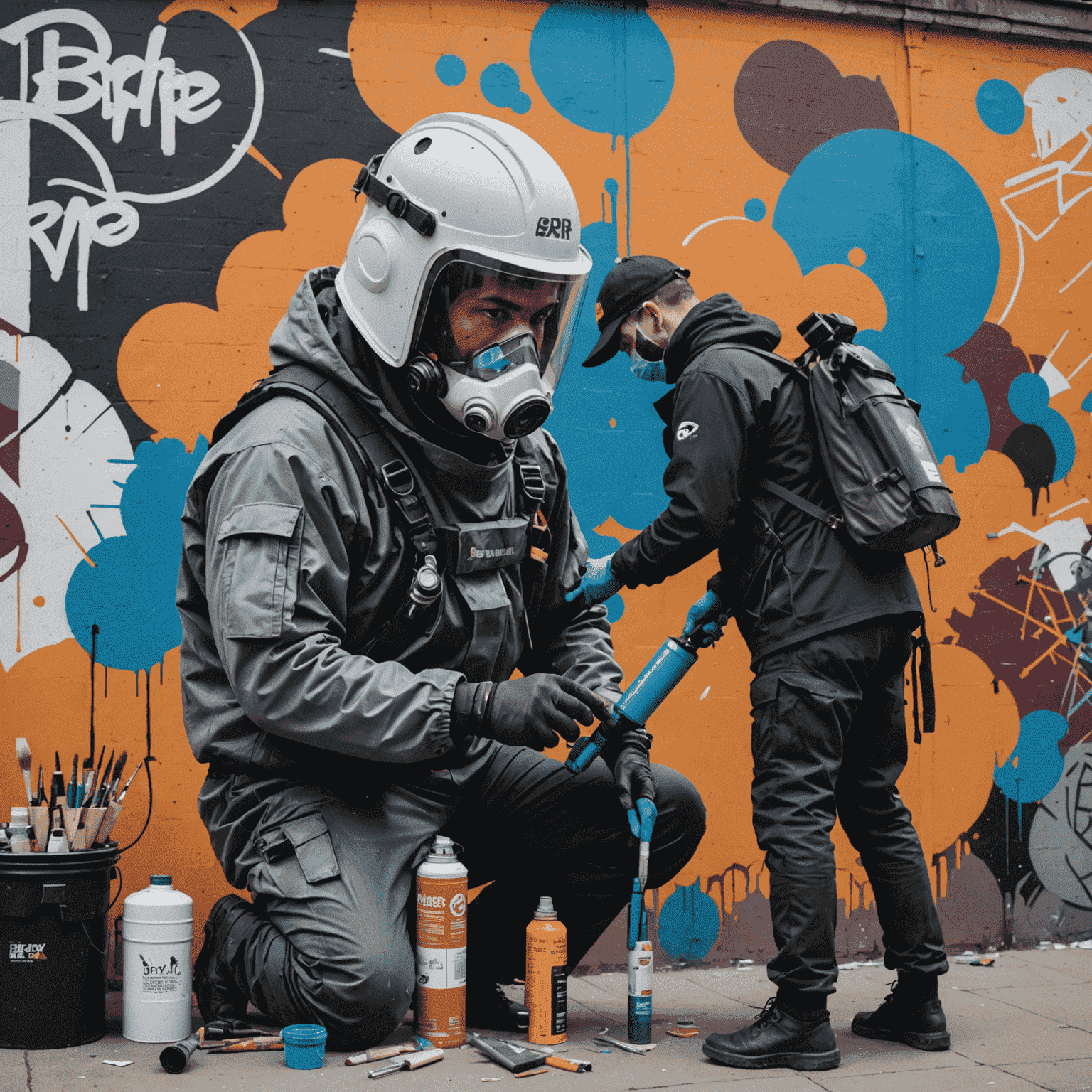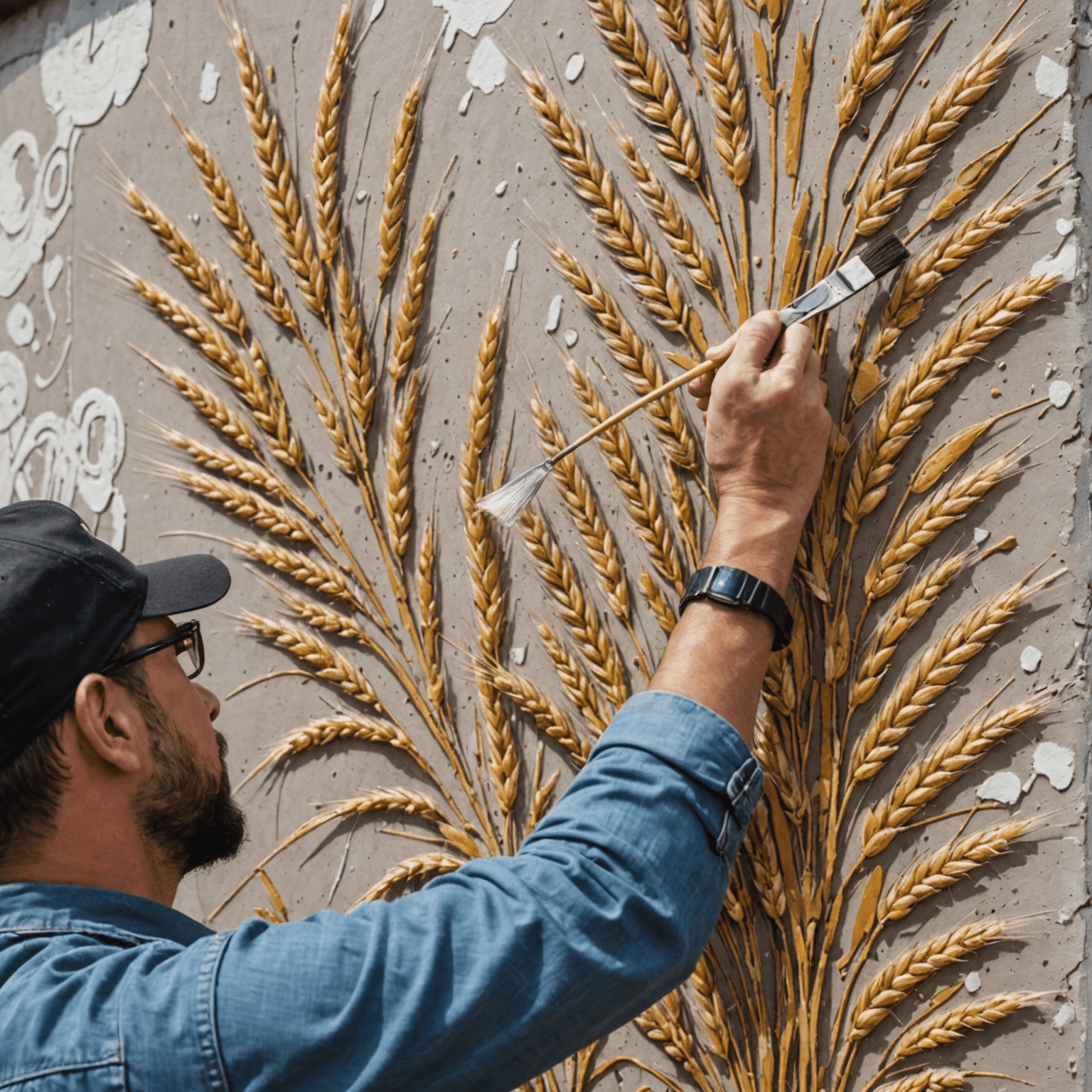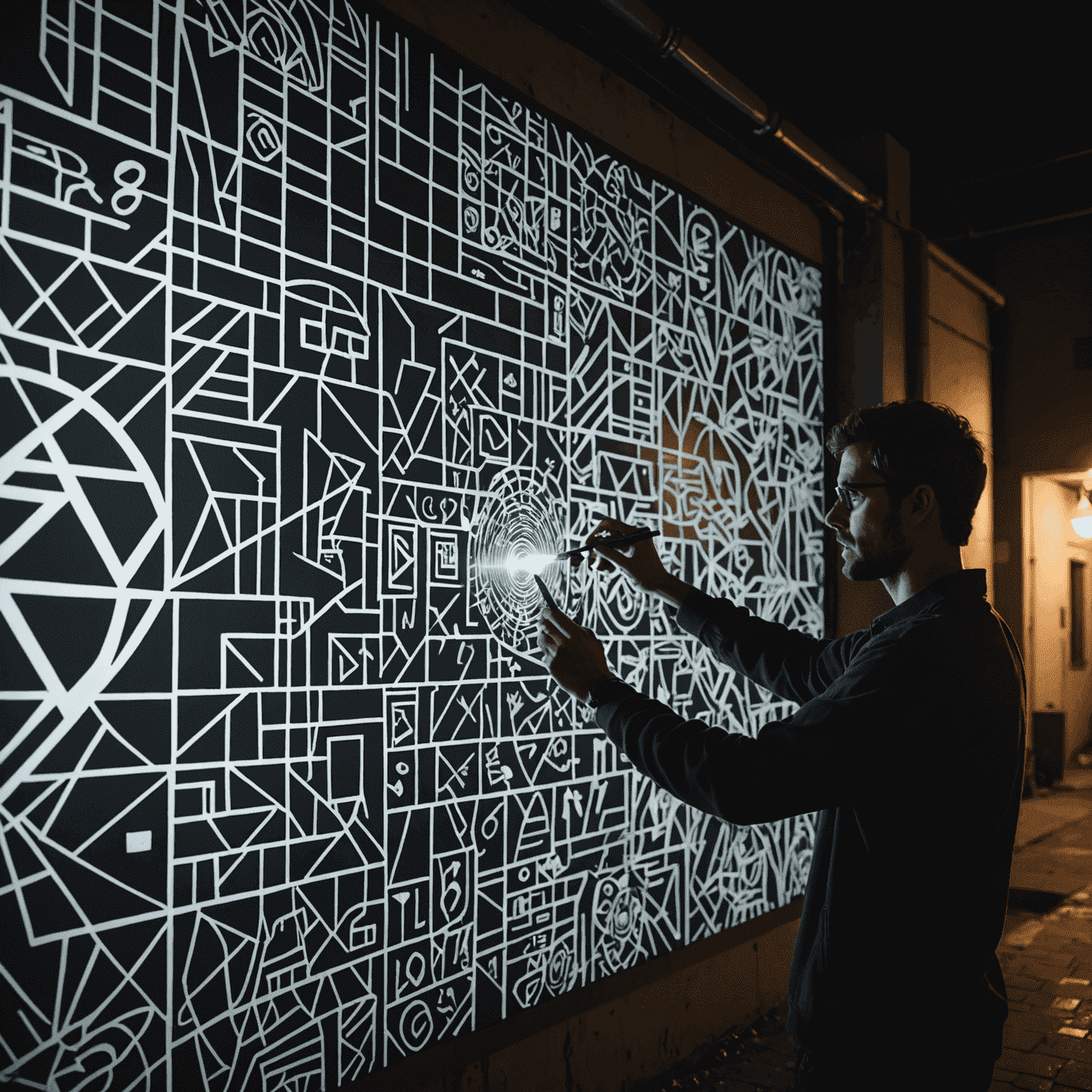Techniques and Tools of Mural Painting

Mural artists employ a diverse array of techniques and tools to bring their grand visions to life on expansive urban canvases. From traditional methods to modern innovations, let's explore the fascinating world of mural creation.
Spray Paint: The Urban Artist's Brush
Spray paint remains the cornerstone of many urban murals, offering quick coverage and a distinctive aesthetic. Artists use various nozzles to achieve different effects, from fine lines to broad strokes. The technique of layering colors and creating gradients with spray paint is an art form in itself.
Wheat Paste: Adhesive Art
Wheat paste allows artists to create murals using pre-made designs on paper. This technique involves adhering large printed or hand-drawn images to walls using a mixture of wheat flour and water. It's particularly useful for intricate designs or photorealistic murals.

Brushes and Rollers: Traditional Meets Modern
Many mural artists still rely on the precision of brushwork for details and the efficiency of rollers for large areas. These traditional tools allow for a wide range of textures and finishes, from smooth color fields to expressive brushstrokes.
Stencils: Precision and Replication
Stencils enable artists to reproduce complex designs with consistency across large surfaces. They're particularly useful for creating repeated patterns or incorporating text into murals. Many artists combine stencil work with freehand techniques for a mixed-media approach.
Digital Projectors: Scaling Up
For highly detailed or proportionally complex murals, artists often use digital projectors to cast their designs onto walls. This technique allows for accurate scaling and placement of elements, especially useful for photorealistic or typography-heavy murals.

Airbrush: Fine Details and Smooth Gradients
Airbrushing allows for the creation of smooth color transitions and fine details. It's particularly effective for creating photorealistic elements within larger mural compositions.
Scaffolding and Lifts: Reaching New Heights
While not painting tools per se, scaffolding and mechanical lifts are crucial for mural artists working on tall buildings or expansive walls. These tools provide safe access to all areas of the mural surface.
Protective Gear: Safety First
Mural artists often work with materials that require protective equipment. Respirators, gloves, and protective eyewear are essential tools that ensure artist safety, especially when working with spray paints or in poorly ventilated areas.
Conclusion: A Blend of Art and Technology
The world of mural painting is a fascinating blend of traditional artistic skills and modern technology. From the raw energy of spray paint to the precision of digital projections, mural artists leverage a wide array of tools and techniques to transform urban spaces into vibrant works of art. As the field continues to evolve, we can expect to see even more innovative approaches to large-scale public art creation.